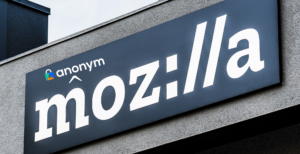Setting price floors in programmatic, open-market auctions is necessary to properly signal the fair market value of a given impression. But the variety of approaches and lack of clear best practices makes choosing or developing a solution difficult.
Many vendors in the marketplace offer standalone flooring-as-a-service products. The most widely used flooring tool is likely Google Ad Manager’s Unified Pricing Rules. Large publishers and sales houses have also developed in-house strategies.
As Jounce’s February 2024 report noted, “Even in the context of first price auctions, dynamic flooring has enough of a yield impact to warrant product investment from the most sophisticated SSPs, wrappers and publishers.”
In short, setting price floors can unlock additional revenue. But just setting a floor doesn’t guarantee more money. Only by setting the “right” floor for any given impression can you increase and not harm yield.
The challenges of price floors
Knowing what price floor to set is tricky. Going too high may result in a lack of bidding activity, while going too low can result in a glut of low value bids.
With first-price auctions now the norm, and sophisticated bid shading strategies employed by DSPs and SSPs, flooring needs to be a long game.
But measuring effectiveness is challenging. Many providers lack the ability to measure a lift in RPM (revenue per pageview), or they may not send floors to all paths. And split tests don’t really demonstrate the full potential of a comprehensive, adaptive flooring strategy.
Even Google Ad Manager’s Unified Pricing Rules (UPRs) can only signal a floor to AdX and Open Bidding partners. The discrepancy between client-side floors and UPRs end up disqualifying client-side bids, leading to additional request throttling by the SSP and, subsequently, lost revenue.
Based on tests of several vendors and UPR strategies, in partnership with publishers in a variety of contexts, we’ve found that the best adaptive flooring strategy is one that is tightly integrated into a publisher’s wrapper.
And others in the industry have arrived at the same conclusion. According to Jounce, “A better approach is for SSPs to issue bid requests with floor prices that estimate the fair market value of the impression. The estimation of fair market value and the resulting creation of a dynamic floor price might be managed by the SSP (affecting just a single path), by the wrapper (affecting a collection of paths) or by the publisher (affecting all paths).”
A wrapper-integrated solution
It’s difficult for floor-as-a-service solutions (and UPRs) to take into account the high-level view of what is happening in any given auction, let alone the dynamics of all auctions and bidder behavior over the course of a user session.
Vendor solutions typically analyze post-auction data after an impression is won, looking at a variety of dimensions to create cohorts and calculate floor prices for future auctions. But many variables are not considered:
- a) Is this auction an initial auction or a refresh auction on the same pageview?
- b) What are the values of bids in Prebid’s bid pool that have not expired and are still eligible to serve?
- c) Are those bids higher than the calculated floor?
- d) How many bids are in the bid pool? And should we keep trying to push the floors up for refresh auctions? Or should we relax the bid floors to try and coax more participants into subsequent auctions?
Publishers should consider taking a holistic approach through on-page, real-time analysis of bidder behavior for a given user during a given session. Adapting the floor prices set in real time for subsequent auctions for that user during the same session is the best approach.
Measuring RPM seems like table stakes. But unless a flooring solution is deeply integrated into a wrapper’s logic around refresh auctions and session depth and can also track pageviews in a given session, it’s nearly impossible for the flooring strategy to be successful.
Real-world examples
When done right, flooring can drive meaningful revenue lift.
A sports media website saw a 76% RPM lift and a 36% revenue lift during the 2024 March Madness season despite traffic being down by 22% YoY.
Similarly, a casual gaming site saw a 40% RPM lift after adaptive flooring was enabled.
When comparing this site to its sister casual gaming site, both sites followed a similar RPM trend line throughout the year. But at the start of the new quarter, the site without adaptive flooring saw a pronounced drop in RPMs, while the site with adaptive flooring more easily sustained RPMs.
Effective flooring solutions must first and foremost consider RPM or RPS (revenue per session), followed by fill rates, impressions per pageview, bid rates and win rates.
With a holistic, highly integrated approach to flooring, the long-term effects are many: more accurate and consistent representation of the value of the inventory to all bidders, improvements to bid and win rates across all SSP paths (including AdX and Open Bidding), less “wasted” bids and, most importantly, meaningful increases in revenue.
“The Sell Sider” is a column written by the sell side of the digital media community.
Follow Longitude Ads and AdExchanger on LinkedIn.

















